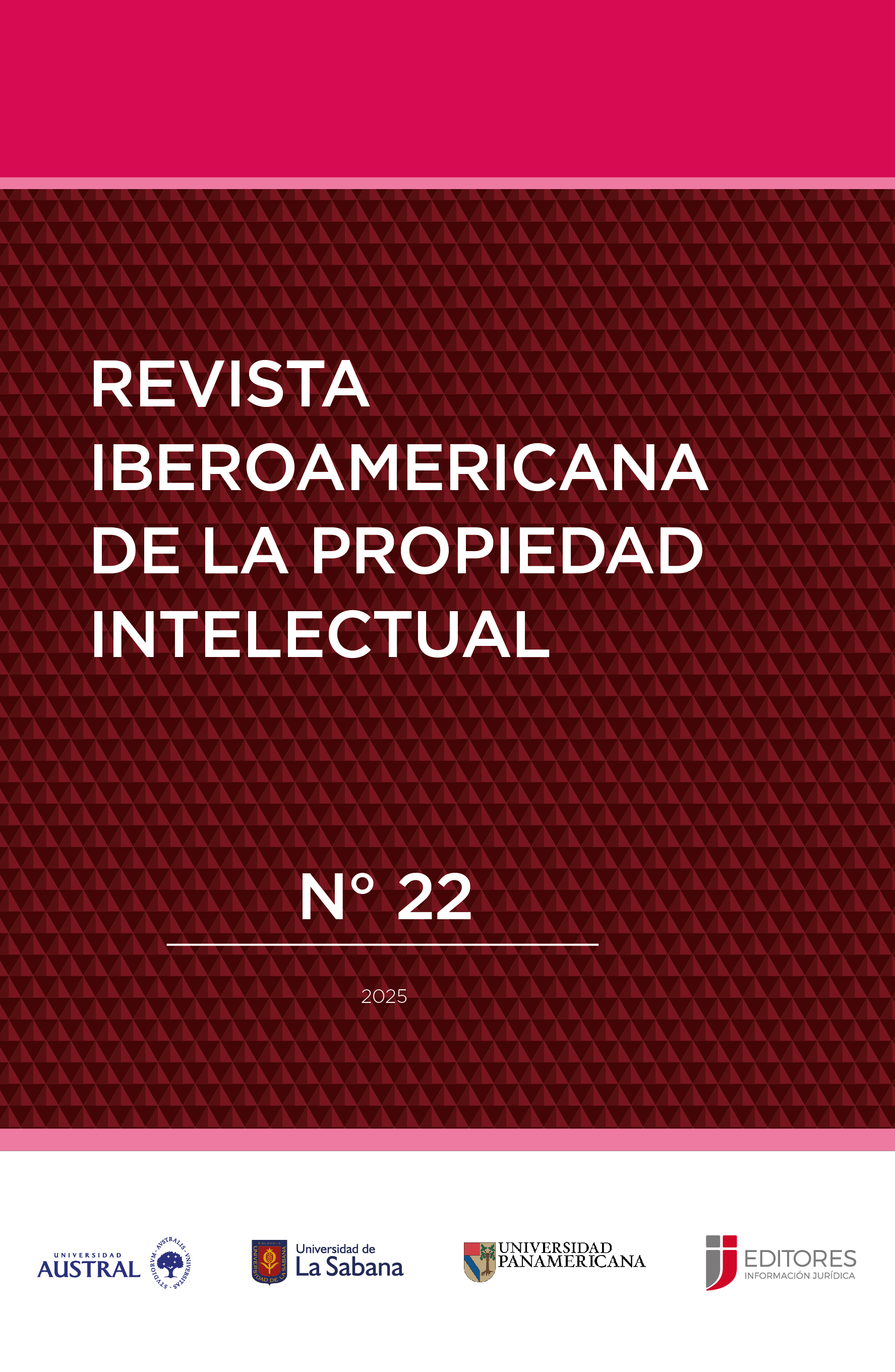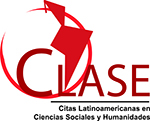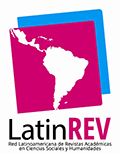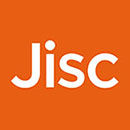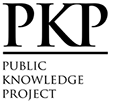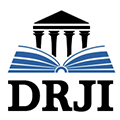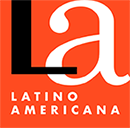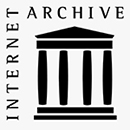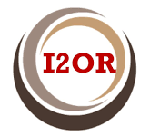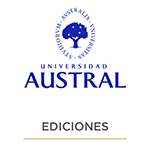Technology Transfer in Public Universities: Activities, Structures, and Outcomes in the Management of Their R&D Intangible Assets
DOI:
https://doi.org/10.26422/RIPI.2025.2200.acoKeywords:
technology transfer, activities, structures, processes, outcomes, innovation, intangible assets, universities, managementAbstract
The objective of this research is to identify the actions that public universities in Ecuador use to leverage the results generated from R&D projects through technology transfer (TT) processes, and how the inventions generated are utilized by the external environment. The literature review highlights topics such as the importance of public policies in TT, universities' knowledge absorption capacity, intellectual property (IP) management, facilitators and barriers in TT, and the role of institutional structures like transfer offices and innovation spaces. A total of 34 public universities were analyzed. Data collection was conducted using secondary sources, such as institutional repositories, publicly accessible websites, and intellectual property databases. These sources provided information on guidelines, structures, activities, and results related to TT in universities. The results show that 91% of universities have strategic guidelines for innovation, but only 50% include actions to protect research results. In terms of TT structures, 32 universities have continuing education centers, and 82% have innovation hubs. Regarding intellectual property (IP) management, universities carry out activities such as patent applications and the creation of spin-offs or start-ups. However, only 21% have implemented comprehensive regulations covering innovation, IP, entrepreneurship, and TT. The main barriers are the lack of funding and the disconnection between universities and the productive sector. Regarding the conclusions, it is emphasized that, although universities are making progress in implementing TT guidelines, they still face challenges, especially in terms of IP protection and the commercialization of their inventions.
Downloads
References
Alessandrini, M., Klose, K. y Pepper, M. S. (2013). University entrepreneurship in South Africa: Developments in technology transfer practices. Innovation: Management, Policy and Practice, 15(2), 205-214. https://doi.org/10.5172/impp.2013.15.2.205
Arvanitis, S., Kubli, U. y Woerter, M. (2011). Knowledge and technology transfer activities between firms and universities in Switzerland: An analysis based on firm data. Industry and Innovation, 18(4), 369-392. https://doi.org/10.1080/13662716.2011.573956
Asamblea Nacional de Ecuador. (2016). Código Orgánico de la Economía Social de los Conocimientos, Creatividad e Innovación (COESC+i). https://derechoecuador.com/uploads/content/2020/12/file_1606929530_1606929536.pdf
Asamblea Nacional del Ecuador. (2018). Ley Orgánica de Educación Superior, LOES. https://www.ces.gob.ec/documentos/Normativa/LOES.pdf
Bezerra, R. (2012). A relação universidade-sociedade na periferia do capitalismo. Revista Brasileira de Ciências Sociais, 27(78), 25-40. https://doi.org/10.1590/S0102-69092012000100002
Brings, J., Daun, M., Brinckmann, S., Keller, K. y Weyer, T. (2018). Approaches, success factors, and barriers for technology transfer in software engineering—Results of a systematic literature review. Journal of Software: Evolution and Process, 30(11), e1981. https://doi.org/https://doi.org/10.1002/smr.1981
Cabanellas de las Cuevas, G. (1994). Contratos de licencia y transferencia de tecnología en el derecho privado (2a ed.). Editorial Heliasta S.R.I.
Cohen, W. M. y Levinthal, D. A. (1990). Absorptive Capacity: A New Perspective on Learning and Innovation. Source: Administrative Science Quarterly, 35(1), 128-152. http://www.jstor.org/stable/2393553
Comacchio, A., Bonesso, S. y Pizzi, C. (2012). Boundary spanning between industry and university: the role of Technology Transfer Centres. The Journal of Technology Transfer, 37(6), 943-966. https://doi.org/10.1007/s10961-011-9227-6
Conlé, M., Kroll, H., Storz, C. y Ten Brink, T. (2023). University satellite institutes as exogenous facilitators of technology transfer ecosystem development. The Journal of Technology Transfer, 48(1), 147-180. https://doi.org/10.1007/s10961-021-09909-7
Consejo de Aseguramiento de la Calidad de la Educación Superior. (2022). Criterios y estándares básicos de calidad para la aprobación de nuevos programas de posgrado (Maestrías, Especializaciones y Doctorados). https://www.caces.gob.ec/wp-content/uploads/downloads/gaceta/Actas_y_Resoluciones/Sesiones_Extraordinarias/SE%202022/SESI%C3%93N%2022/ANEXOS/Actualizacion_criterios_y_estandares_calidad_aprobacio%CC%81n_nuevos_programas__posgr.pdf
Consejo de Aseguramiento de la Calidad de la Educación Superior. (2023). Modelo de evaluación externa con fines de acreditación para el aseguramiento de la calidad de las universidades y escuelas politécnicas. https://www.caces.gob.ec/wp-content/uploads/2023/12/Modelo-de-Evaluacio%CC%81n-Externa-UEP-2023-1.pdf
Consejo de Educación Superior. (2022a). Reglamento de Carrera y Escalafón del Personal Académico del Sistema de Educación Superior. https://www.ces.gob.ec/lotaip/2022/Marzo/a3/Reglamento%20de%20Carrera%20y%20Escalaf%C3%B3n%20del%20Personal%20Acad%C3%A9mico%20del%20Sistema%20de%20Educaci%C3%B3n%20Superior.pdf
Consejo de Educación Superior. (2022b). Reglamento de Régimen Académico. https://www.ces.gob.ec/wp-content/uploads/2022/08/Reglamento-de-Re%CC%81gimen-Acade%CC%81mico-vigente-a-partir-del-16-de-septiembre-de-2022.pdf
Dutta, S., Rivera León, L. y Wunsch-Vicent, S. (Eds.). (2023). Global Innovation Index 2023. Innovation in the face of uncertainty (16a ed.). World Intellectual Property Organization. https://www.wipo.int/edocs/pubdocs/en/wipo-pub-2000-2023-en-main-report-global-innovation-index-2023-16th-edition.pdf.
Escuela Politécnica Nacional. (2024). Dirección de Innovación y Vinculación. https://www.epn.edu.ec/innovacion-y-vinculacion/direccion-innovacion-y-vinculacion/
Espacenet. (2023a). Espacenet – search results PUCC. https://worldwide.espacenet.com/patent/search?q=pa%20all%20%22PONTIFICIA%20CATOLICA%20CHILE%22%20AND%20pd%20within%20%222023%22
Espacenet. (2023b). Espacenet – search results USP. Patent search. https://worldwide.espacenet.com/patent/search?q=pa%20all%20%22UNIVERSIDADE%20DE%20S%C3%83O%20PAULO%22%20AND%20pd%20within%20%222023%22
Espacenet. (2024). Espacenet – search results. Results. https://worldwide.espacenet.com/patent/search?q=pa%20all%20%22university%22%20AND%20pd%20%3D%20%222023%22
Etzkowitz, H. y Zhou, C. (2021). Licensing life: The evolution of Stanford university’s technology transfer practice. Technological Forecasting and Social Change, 168. https://doi.org/10.1016/j.techfore.2021.120764
Feng, H., Chen, C. y Wang, C. (2012). The role of intellectual capital and university technology transfer offices in university-based technology transfer. The Service Industries Journal, 32(6), 37-41. https://doi.org/https://doi.org/10.1080/02642069.2010.545883
Gilsing, V., Bekkers, R., Bodas Freitas, I. M. y Van Der Steen, M. (2011). Differences in technology transfer between science-based and development-based industries: Transfer mechanisms and barriers. Technovation, 31(12), 638-647. https://doi.org/10.1016/J.TECHNOVATION.2011.06.009
González-Pernía, J. L., Kuechle, G., Peña-Legazkue, I., Gonzalez-Pernia, J. L., Kuechle, G., Pena-Legazkue, I., González-Pernía, J. L., Kuechle, G. y Peña-Legazkue, I. (2013). An Assessment of the Determinants of University Technology Transfer. Economic Development Quarterly, 27(1), 6-17. https://doi.org/10.1177/0891242412471847
Heisey, P. W. y Adelman, S. W. (2011). Research expenditures, technology transfer activity, and university licensing revenue. Journal of Technology Transfer, 36(1), 38-60. https://doi.org/10.1007/s10961-009-9129-z
Higgins, E., Zorrilla, M., Murphy, K. M., Robertson, M., Goldberg, M. R., Cohen, S. K., Augustine, N. y Pearlman, J. L. (2022). Barriers and facilitators to technology transfer of NIDILRR grantees. Disability and Rehabilitation: Assistive Technology. https://doi.org/10.1080/17483107.2022.2122604
HUB-UIO. (2023). Informe de fin de gestión y cierre del proyecto HUB-UIO. Documento de trabajo.
IKIAM. (2022). Dirección de innovación y transferencia de tecnología. https://www.ikiam.edu.ec/index.php/docs/brochure-de-servicios-y-productos-direccion-de-innovacion-y-transferencia-de-tecnologia/
Ito, T., Kaneta, T. y Sundstrom, S. (2015). Does university entrepreneurship work in Japan?: a comparison of industry-university research funding and technology transfer activities between the UK and Japan. Journal of Innovation and Entrepreneurship, 5(1). https://doi.org/10.1186/s13731-016-0037-9
Jonsson, L., Baraldi, E. y Larsson, L.-E. (2015). A broadened innovation support for mutual benefits: Academic engagement by universities as part of technology transfer. International Journal of Technology Management & Sustainable Development, 14(2), 71-91. https://doi.org/10.1386/tmsd.14.2.71_1
Kirs, M., Lember, V. y Karo, E. (2021). Technology transfer in economic periphery: Emerging patterns and policy challenges. Review of Policy Research, 38(6), 677-706. https://doi.org/10.1111/ropr.12437
Martínez, C., Rojas, L., Guillén, J. y Antúnez, N. (2012). Responsabilidad social universitaria, transferencia y mercadeo tecnológico: vinculación con el entorno social. Revista Venezolana de Gerencia, 17(59), 512-528. https://www.redalyc.org/pdf/290/29024166008.pdf
Necoechea-Mondragón, H., Pineda-Domínguez, D. y Soto-Flores, R. (2013). A conceptual model of technology transfer for public universities in {Mexico}. Journal of Technology Management and Innovation, 8(4), 24-35. https://www.scopus.com/inward/record.uri?eid=2-s2.0-84891386183&partnerID=40&md5=88ed247ec19ab308debc764dbe16173f
O’Reilly, P. y Cunningham, J. A. (2017). Enablers and barriers to university technology transfer engagements with small- and medium-sized enterprises: perspectives of Principal Investigators. Small Enterprise Research, 24(3), 274-289. https://doi.org/10.1080/13215906.2017.1396245
Observatorio Iberoamericano de la Ciencia, la Tecnología y la Sociedad y Red Iberoamericana de Indicadores de Ciencia y Tecnología. (2017). Manual Iberoamericano de Indicadores de Vinculación de la Universidad con el Entorno Socio económico Manual de Valencia. http://www.ricyt.org/wp-content/uploads/2017/06/files_manual_vinculacion.pdf
Organización Mundial de la Propiedad Intelectual. (2012). Principios básicos de propiedad industrial. Publicación de la OMPI, 895, 28. https://www.wipo.int/edocs/pubdocs/es/wipo_pub_895_2016.pdf
Organización Mundial de la Propiedad Intelectual. (2022). Informe de los CATI y las OTT 2022 - Fortalecimiento de las capacidades de innovación locales para acelerar la transferencia de conocimientos y tecnología. Publicaciones. https://www.wipo.int/edocs/pubdocs/es/wipo-pub-1059-22-es-tiscs-and-ttos-report-2022.pdf
Organización Mundial de la Propiedad Intelectual. (2023). Búsqueda en las colecciones de patentes nacionales e internacionales. https://patentscope.wipo.int/search/es/result.jsf?_vid=P12-LWGQ5D-88090
Organización Mundial de la Propiedad Intelectual. (2024a). OMPI – Búsqueda en las colecciones de patentes nacionales e internacionales. PATENTSCOPE. https://patentscope.wipo.int/search/es/result.jsf?_vid=P20-LW6T16-75284
Organización Mundial de la Propiedad Intelectual. (2024b). Propiedad intelectual y transferencia de tecnología. https://www.wipo.int/es/web/technology-transfer
Organización Mundial de la Propiedad Intelectual. (2024c). La transferencia de conocimientos en las universidades. Las universidades y la propiedad intelectual. https://www.wipo.int/es/web/universities/knowledge-transfer
Organización Mundial de la Propiedad Intelectual. (2024d). Políticas de PI para universidades e instituciones de investigación. https://www.wipo.int/technology-transfer/es/ip-policies.html
Presidencia de la República [Ecuador]. (2017). Reglamento Código Orgánico Economía Social de los Conocimientos. https://www.ces.gob.ec/lotaip/2018/Agosto/Anexos-literal-a2/REGLAMENTO%20CODIGO%20ORGANICO%20ECONOMIA%20SOCIAL.pdf
Presidencia de la República [Ecuador]. (2022). Reglamento a la Ley Orgánica de Educación Superior. https://concurso.unae.edu.ec/media/normativa/03%20Reglamento%20LOES%202022.pdf
QS. (2024). Latin America & The Caribbean University Rankings 2024. QS World University Rankings. https://www.topuniversities.com/latin-america-caribbean-overall?tab=indicators&sort_by=rank&order_by=asc
Quiñones, R., Caladcad, J. A., Himang, C., Quiñones, H., Castro, C., Caballes, S. A., Abellana, D. P., Jabilles, E. M. y Ocampo, L. (2020). Using Delphi and fuzzy DEMATEL for analyzing the intertwined relationships of the barriers of university technology transfer: Evidence from a developing economy. International Journal of Innovation Studies, 4(3), 85-104. https://doi.org/10.1016/J.IJIS.2020.07.002
Quiñones, R., Caladcad, J. A., Quiñones, H., Caballes, S. A., Abellana, D. P., Jabilles, E. M., Himang, C. y Ocampo, L. (2019). Open Innovation with Fuzzy Cognitive Mapping for Modeling the Barriers of University Technology Transfer: A Philippine Scenario. Journal of Open Innovation: Technology, Market, and Complexity, 5(4), 94. https://doi.org/10.3390/JOITMC5040094
Quiñones, R., Caladcad, J. A., Quiñones, H., Castro, C., Caballes, S. A., Abellana, D. P., Jabilles, E. M., Himang, C. y Ocampo, L. (2020). Priority Challenges of University Technology Transfer with Interpretative Structural Modeling and MICMAC Analysis. International Journal of Innovation and Technology Management, 17(05), 2050038. https://doi.org/10.1142/S0219877020500388
Rahim, N. A., Mohamed, Z. B. y Amrin, A. (2021). From lab to market: Challenges faced by academic entrepreneur in technology transfer pursuit. International Journal of Business and Society, 22(3), 1256-1268. https://doi.org/10.33736/ijbs.4300.2021
Sapir, A. (2021). Brokering knowledge, monitoring compliance: technology transfer professionals on the boundary between academy and industry. Journal of Higher Education Policy and Management, 43(3), 248-263. https://doi.org/10.1080/1360080X.2020.1804657
Schoen, A., Van Pottelsberghe de la Potterie, B. y Henkel, J. (2014). Governance typology of universities’ technology transfer processes. Journal of Technology Transfer, 39(3), 435-453. https://doi.org/10.1007/s10961-012-9289-0
Secretaria Nacional de Planificación. (2024). Plan de Desarrollo para el Nuevo Ecuador 2024 - 2025 (1a ed.). Gráficas IMAGO Cía. Ltda. https://www.planificacion.gob.ec/wp-content/uploads/2024/02/PND2024-2025.pdf
Secretaría de Educación Superior, Ciencia, Tecnología e Innovación. (2018). Programas y proyectos. https://www.educacionsuperior.gob.ec/programas-y-proyectos/
Secretaría de Educación Superior, Ciencia, Tecnología e Innovación. (2023a). REGLAMENTO DE REGISTRO DE ESPACIOS DE TRABAJO COLABORATIVO O COWORKING, Y ACREDITACIÓN DE ESPACIOS DE INNOVACIÓN Y ESPACIOS DE TRANSFERENCIA DE TECNOLOGÍA. https://www.gob.ec/sites/default/files/regulations/2023-09/Documento_Reglamento-Registro-Espaciosde-Trabajo-Colaborativo-Coworking-Acreditaci%C3%B3n-Espacios-Innovaci%C3%B3n-Espacios-Transferencia-Tecnolog%C3%ADa.pdf
Secretaría de Educación Superior, Ciencia, Tecnología e Innovación. (2023b).
Reglamento de Registro y Acreditación de Actores de Investigación e Incentivos Financieros y Administrativos a la Investigación, Desarrollo Tecnológico y Transferencia de Tecnología. Registro Oficial. https://www.gob.ec/sites/default/files/regulations/2023-07/Documento_reglamento_registro_acreditaci%C3%B3n_actores_investigaci%C3%B3n_incentivosfinancieros_administrativos_investigaci%C3%B3n_desarrollo_tecnol%C3%B3gico_transferencia_tecnolog%C3%ADa.pdf
Secretaría de Educación Superior, Ciencia, Tecnología e Innovación. (2024). Espacio de innovación o transferencia de tecnología - Idearium. ¿Qué es Idearium? http://www.idearium.gob.ec/incubadora/index
Shen, Y. C. (2017). Identifying the key barriers and their interrelationships impeding the university technology transfer in Taiwan: a multi-stakeholder perspective. Quality & Quantity, 51, 2865-2884.
Shmeleva, N., Gamidullaeva, L., Tolstykh, T. y Lazarenko, D. (2021). Challenges and opportunities for technology transfer networks in the context of open innovation: Russian experience. Journal of Open Innovation: Technology, Market, and Complexity, 7(3). https://doi.org/10.3390/joitmc7030197
Sigurdson, K., Sá, C. M. y Kretz, A. (2015). Looking under the street light: Limitations of mainstream technology transfer indicators. Science and Public Policy, 42(5), 632-645. https://doi.org/10.1093/scipol/scu080
Times Higher Education. (2021). Impact Rankings 2023: industry, innovation, and infrastructure. https://www.timeshighereducation.com/rankings/impact/2023/industry-innovation-and-infrastructure
Toscano, F. L. P., Mainardes, E. W. y Lasso, S. V. (2017). Exploring Challenges in University Technology Transfer in Brazil. International Journal of Innovation and Technology Management, 14(04), 1750021. https://doi.org/10.1142/S0219877017500213
Trzmielak, D. M. y Grzegorczyk, M. (2014). Knowledge and technology transfer barriers - Polish universities perspectives. 2014 IEEE International Conference on Management of Innovation and Technology, 168-173. https://doi.org/10.1109/ICMIT.2014.6942420
Tseng, A. A. y Raudensky, M. (2014a). Assessments of technology transfer activities of US universities and associated impact of Bayh–Dole Act. Scientometrics, 101(3), 1851-1869. https://doi.org/10.1007/s11192-014-1404-6
Tseng, A. A. y Raudensky, M. (2014b). Performance Evaluations of Technology Transfer Offices of Major US Research Universities. Journal of technology management & innovation, 9(1), 93-102. https://doi.org/10.4067/S0718-27242014000100008
Universidad Nacional de Chimborazo. (2023). Servicios. Dirección de Investigación. https://investigacion.unach.edu.ec/
Vinig, T. y Lips, D. (2015). Measuring the performance of university technology transfer using meta data approach: the case of Dutch universities. Journal of Technology Transfer, 40(6), 1034-1049. https://doi.org/10.1007/s10961-014-9389-0
Yazdani, K., Rashvanlouei, K. Y. y Ismail, K. (2011). Ranking of technology transfer barriers in developing countries; case study of Iran’s biotechnology industry. 2011 IEEE International Conference on Industrial Engineering and Engineering Management, 1602-1606. https://doi.org/10.1109/IEEM.2011.6118187
Downloads
Published
Issue
Section
License
This license allows the copy, distribution, exhibition and representation of the work provided authorship is acknowledged and the work is properly quoted. Commercial use of the original work or the generation of derived works are not allowed.
The authors hereby guarantee the right to the first publication of the work to the Revista Iberoamericana de la Propiedad Intelectual.

